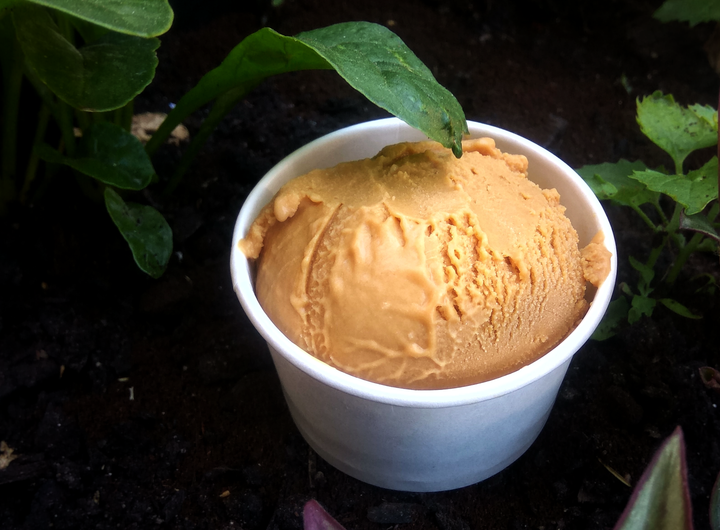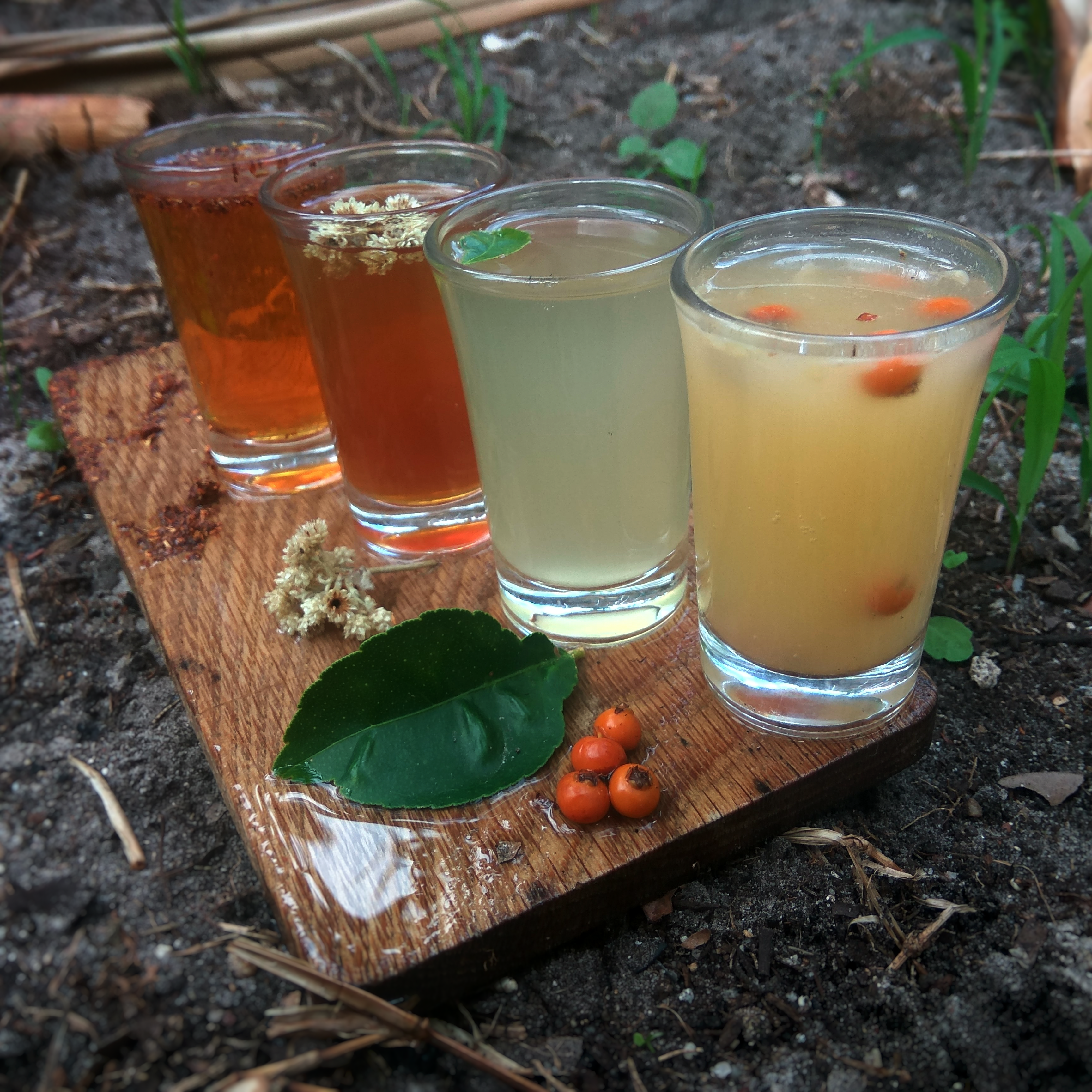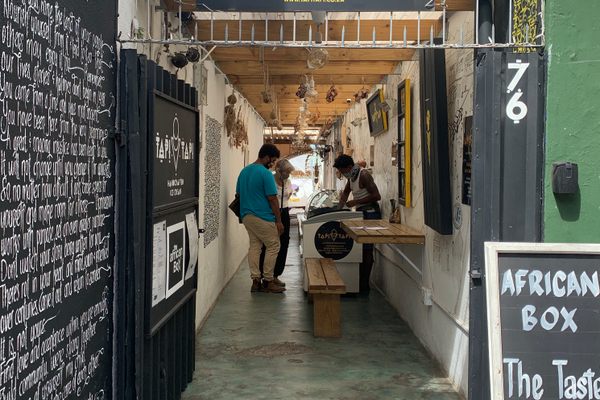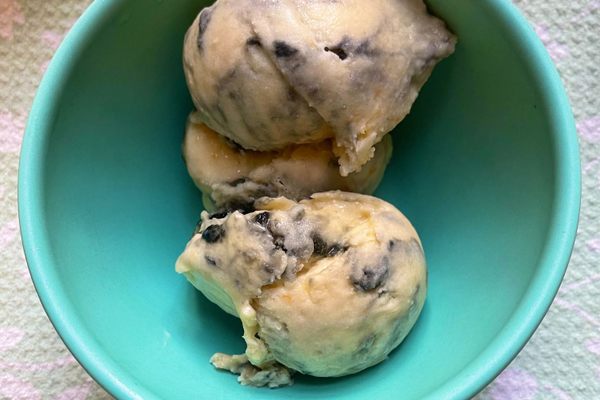

Tapi Tapi Ice Cream Is a Sweet Education on African Liberation
Tapiwa Guzha’s desserts stir up conversation about culture, history, and identity.
“This flavor is for my grandmother,” says Tapiwa Guzha, pointing to a rooibos and fennel granita on the menu at his ice cream store in Cape Town, South Africa. “She grew fennel in her garden.”
Guzha is a microbiologist turned ice-cream maker who was raised to grow and eat fruit and vegetables straight from his grandmother’s garden. Taking inspiration from the flavors of his childhood, he makes his ice cream with indigenous African ingredients such as blackjack, sorghum, millet, edible clay, hibiscus, baobab, and okra. In doing so, he invites diners into a conversation about what constitutes local food in Cape Town, a city indelibly associated with apartheid and Eurocentrism.
The name of Guzha’s store, Tapi Tapi, plays on both his own first name and the colloquial term for “yum yum” in Shona, his mother tongue. Guzha grew up in his grandmother’s home in Harare, Zimbabwe. They lived in the suburbs, but the garden was abundant with a variety of fruits, vegetables, herbs, and chickens. Guzha learned how to farm and grow food. He learned about medicinal properties of certain plants. He also intimately knew the meaning of communal eating. Living with up to 12 kids at times, his grandmother had to make food go a long way.
Guzha remembers the process of making peanut butter, from harvesting the peanuts to fire roasting to stone grinding. Processed food was hardly on the table—a benefit of rural knowledge and values in the urbanized setting of the capital city. He cherishes this as an adult, but as a child he was shamed at school for sometimes bringing leftovers from home like sweet potato or sadza (a starch made from milled maize) and vegetables in his lunchbox, while the other kids ate ham sandwiches.

When Guzha moved to Cape Town for university he started to experiment with cooking. He was great at making ice cream and saw it as much of a scientific process as anything else he was working on. “I’d go from doing lab work to going home and doing more lab work,” he says. As an immigrant in South Africa, Guzha distanced himself from South African politics. But when he moved to Stellenbosch University for his PhD, a notoriously white Afrikaans town outside of Cape Town, it was impossible to ignore. According to Guza’s experience, “Stellenbosch is only Black in the sense of the people who work there. If you go to Stellenbosch after 6 p.m. it’s not a Black town, there are no Black people around.” Stellenbosch University, the alma mater of apartheid architect Hendrik Verwoerd, has been called out for institutional racism countless times, culminating in a mass student movement against racism in 2015. In these surroundings, nothing reflected Guzha’s cultural heritage or that of Black people in South Africa, from language, food, clothing, and entertainment to ways of being and communicating. Guzha recalls that most signs during his time there were in English or Afrikaans, and that the first time he saw a sign in Xhosa, it said “Trespassers will be prosecuted.”
The jarring experience of living in Stellenbosch grew his awareness of injustice and racial inequality. On a trip to Bali, Guzha was reminded of the connectedness he’d been missing over the recent years, witnessing the community practices among Balinese people. Where he stayed, families lived in compounds similar to what he grew up with in Zimbabwe, working together farming, growing their own food, and eating together. A week after he returned from his trip, his grandmother passed. Her death pushed him to reflect on how he wanted to live. He decided that making ice cream was going to be his main project. One day a moment of inspiration hit: He could incorporate the Zimbabwean foods of his childhood.

Guzha created four flavors based on nostalgic snacks: Mazoe Orange, a local and beloved fruit juice concentrate; Maputi, a popular snack of popped maize kernels (different from typical popcorn); masawu, a local fruit also known as jujube dates; and mawuyu: baobab seeds. After he tasted his first creations, he felt something profound. “I realized all the food I make doesn’t reflect my food history,” he says. He had perfected making noodles and pasta from scratch and many mainstream ice cream flavors, but hadn’t given the same level of attention to the foods from his upbringing. “Then you look around and notice, in general this place [South Africa] doesn’t reflect its food history. It’s not even like a fusion, it’s pure eradication of what was here before.” He says the same can be said for the continent to varying extents. Even in African countries with strong pride in their food cultures, people still turn to Western foods when they want to impress.
When Tapi Tapi opened in 2018, Guzha called his dessert creations “African ice cream.” He no longer does. “If you go to Mexico you don’t have Mexican ice cream, you’re just going to have ice cream, made with local flavors,” he says. “You don’t go to Italy and have ‘Italian food,’ you just have ‘food.’”

Guzha engages with every single customer with the same level of energy. Every other person walking down the street knows him and greets him. He offers a bartering system where customers can exchange ingredients for ice cream: If he uses your ingredient to make ice-cream, you get a free tub of it. He’s received produce from people with fruit trees, ingredients like Ethiopian coffee, and traditional baked goods. He was once gifted some dried Cape seaweed that he turned into a flavor he’s declared one of his all time favorites, pairing it with black salt and spent grain. Guzha also holds free lessons on how to make ice cream. He’s even set up a feeding scheme where customers can donate ingredients or money for him to cook nutritious meals for hungry people who pass by his café. This is the community he wants to build through his work; ice cream is just the current vessel. “It’s not even about ice cream,” he says. “This person couldn’t care less about my philosophy about African food culture—he’s hungry right now.”
It’s through these kinds of community relationships that Guzha builds knowledge that helps him develop new flavors. His mind is constantly curious. The flavors change weekly as he experiments with different foods, flora, and flavors from across the continent. Added to this is his fearless tasting of plants he comes across while walking in nature. It’s a sometimes dangerous approach, but because he grew up eating straight from the dirt, he says his stomach can handle most things. “Also, I’m a plant biologist, I have paperwork to qualify this recklessness,” he says. Peanuts and peanut butter, which played such a prominent role in Guzha’s life, feature frequently in different forms. One of them is mashakada, inspired by a Zimbabwean dish of peanut butter and rice, making for a textural and flavorful experience. Other popular flavors include amagwinya, a South African (but found in different forms all over the continent) deep fried dough with kei apple jam, and West African and central African scotch bonnet chili in the form of chili jam. Recently, a flavor that wowed many was matemba, a salt cured, dried fish popular in Zimbabwe, which he paired with toffee.

At one of his tasting events he presented an ice cream smoked with imphepho, a medicinal plant used in the Southern African ritual of inviting ancestors into a space. Some people were unhappy with the use of the sacred plant in this way, others were stunned and excited. Either way, it had his intended effect: To stir up conversation about culture, ritual and history. For the first time in Cape Town, he says, Black people felt seen by the menu.
For many African people, the taste of a Tapi Tapi flavor brings up strong memories, associations, and emotions. When Guzha sees people reacting to his embrace of their childhood foods, he remembers his own shame around his food from his school days. “You finally realize, this isn’t about food at all,” he says. “It’s about people’s self-esteem, and the shame we have around our own identities—whether it’s through our food, clothing, music, or art.”
Ultimately, Guzha wants ice cream made with African ingredients to be fun, but unremarkable. “I want us to have our cultural experiences to the point where it’s frivolous,” he says. Those experiences would not be subject to constant cultural translation for Western languages, palates, and norms. “And just how people learned to say sushi, gnocchi, and croissant, they should learn to say imphepho and not ‘African sage.’”
Gastro Obscura covers the world’s most wondrous food and drink.
Sign up for our regular newsletter.






















Follow us on Twitter to get the latest on the world's hidden wonders.
Like us on Facebook to get the latest on the world's hidden wonders.
Follow us on Twitter Like us on Facebook